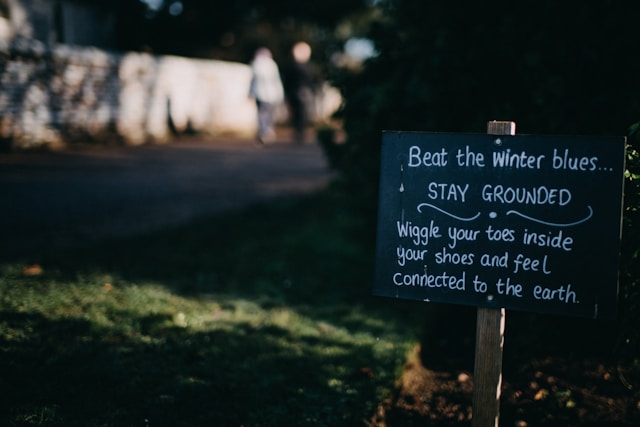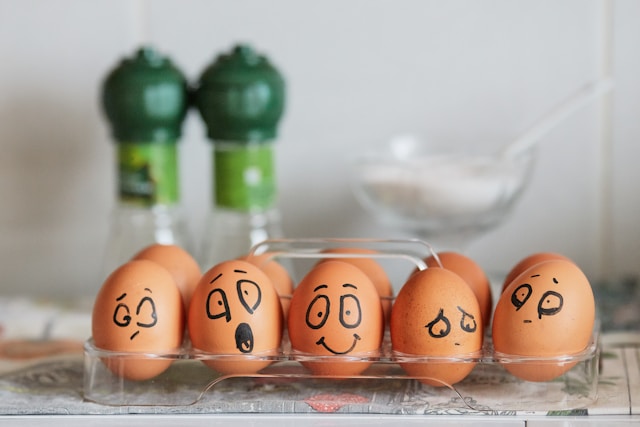As the darker months draw near, many people begin to notice subtle shifts in mood, energy, and motivation. For some, this goes beyond the occasional “winter blues” and becomes something more persistent. Seasonal Affective Disorder, or SAD, is the name often given to this pattern, a form of depression that follows the seasons, most commonly appearing in late autumn and winter, and lifting in spring or summer.
SAD can look like fatigue, loss of motivation, changes in sleep, cravings for heavier foods, difficulty concentrating, and a sense of heaviness that does not easily shift. It is very real, though it can show up in different ways and intensities. Some people may have a formal diagnosis, while others simply recognise the patterns in themselves year after year.
For myself, I have been diagnosed with a depressive disorder before, but I do not always find diagnosis the most helpful lens. That does not mean I dismiss it. For many people diagnosis is hugely valuable. It can provide language, validation, and access to support. But for me, what feels most useful is simply recognising how the seasons affect my body and mind. I have not been diagnosed with SAD, but I know how the darker months can trigger depression. Often, what feels hardest is not the low mood itself, but the anticipation, the dread of shorter days, the thought of endless dark nights.
I try to catch myself when this dread sets in. Naming the thought as anticipation rather than sinking straight into it makes a difference. It allows me to see it as part of a pattern, not the whole of who I am.
In my therapy practice, I notice clients experiencing something similar. Many people begin to feel uneasy long before winter truly arrives. The shortening days signal what is coming, and mood begins to shift even before December. Families often notice tensions rising at this time of year too. Children can find dark mornings and evenings unsettling, making school routines harder. Parents often feel pressure building around Christmas, the financial strain, the social obligations, the sense of needing to make it magical. It can all add weight to an already heavy season.
One way systemic therapy approaches difficulties like SAD is through externalising. That means treating the problem as something outside the person, rather than something fixed inside them. Depression is not who you are. It is something that visits, something shaped by context. And when we see it this way, we can begin to ask different questions. What contexts feed this depression? What contexts give us relief? Who in our lives helps us feel lighter, and what routines or rituals make space for a steadier self?
I often remind clients, and myself, that we cannot always be the side of ourselves we want to be when the context does not allow it. If the season is drawing our energy away, how might we gently adapt? Sometimes that means lowering the bar, asking less of ourselves, or creating rituals that make the season more bearable. Other times it means deliberately booking in bright spots, a meal with friends, a winter walk, a visit to something seasonal like Halloween or a Christmas market. These markers remind us that life is still moving, and not everything is swallowed up by darkness.
Routine and movement are also crucial. But it is important to redefine what we mean by exercise. It does not have to be intense or punishing. Taking care of your body might look like a walk, some gentle stretches, or moving in a way that feels kind. For me, early morning walks help. Even a quick coffee outside under some shelter gives me a moment of light, a rhythm to begin the day.
For some people, light therapy, using a SAD lamp, makes a huge difference. I have tried them, and they do not work for me, I cannot get past the sense that it is artificial. But I know many who swear by them. This is why it is so important to experiment and discover what genuinely supports you. There is no single right answer.
Here are some supports I often suggest, drawn both from personal experience and therapeutic practice:
- Create structure: Keep a consistent daily and weekly rhythm, especially around sleep and waking.
- Seek light: Get outdoors early when possible, even small doses of natural light are valuable.
- Move gently: Choose forms of exercise that you actually enjoy and can sustain. Walking counts.
- Mark the season: Plan small events or rituals to look forward to. Autumn and winter hold festivals that can become anchors rather than burdens.
- Notice anticipation: Recognise when dread is creeping in. Naming it helps stop it from becoming the whole story.
- Externalise depression: Remember that depression is not you. It is an experience influenced by context, and contexts can be shifted.
Above all, I want people to hold onto this truth. Depression, whether seasonal or not, is not your identity. It does not define you. It is something that moves through, and with the right care, from yourself, from loved ones, from therapy if you need it, it can ease.
As we step into darker months, the invitation is not only to brace ourselves but also to prepare with intention. Ask yourself, what supports me? What routines will keep me grounded? What small pleasures will I allow myself, even in the bleak days?
SAD is challenging, yes. But it is also something we can meet with compassion, with creativity, and with community.





